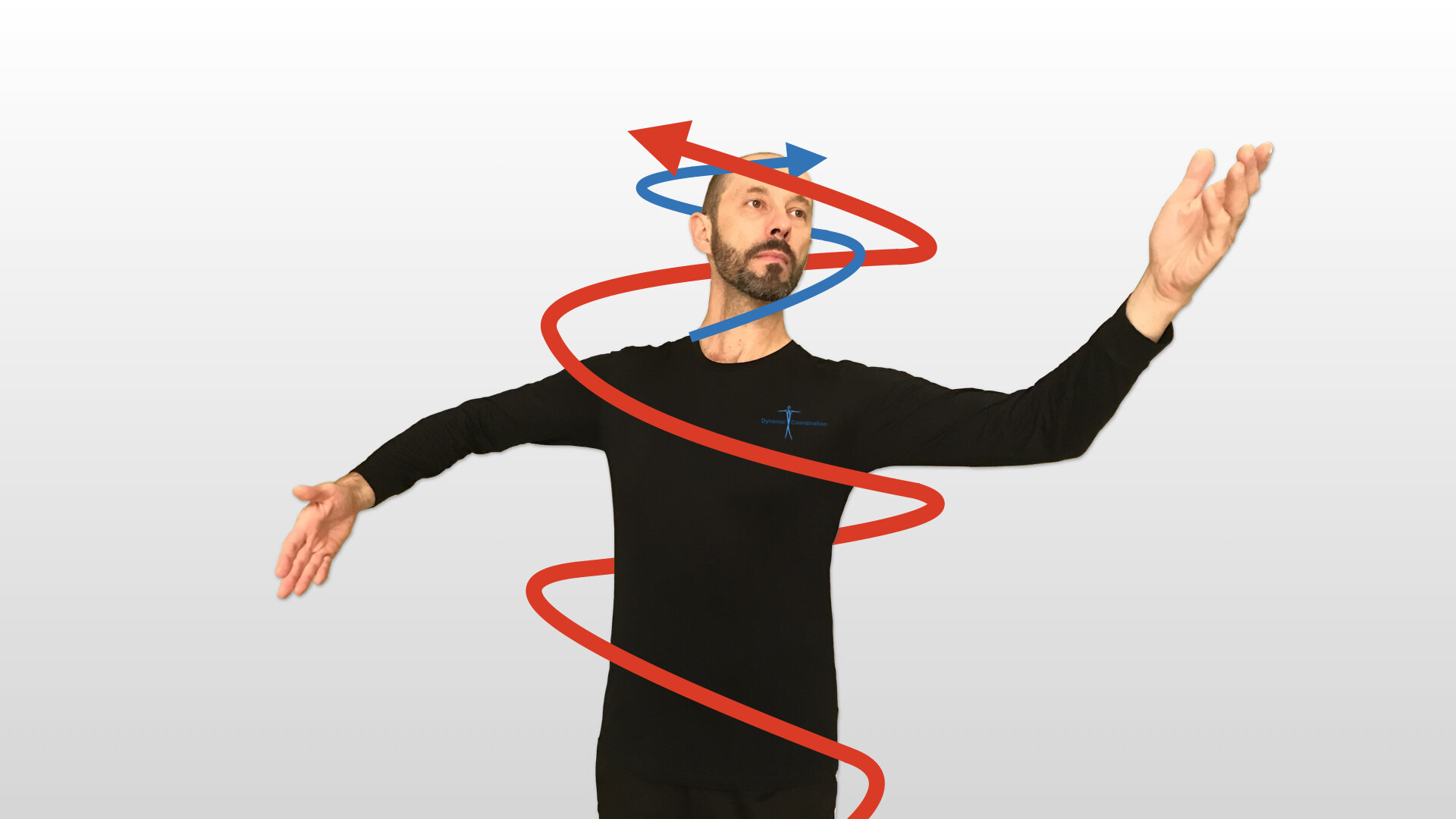All tagged Alexander Technique
Spiral arrangement of human voluntary musculature is not limited to the torso and neck, but it also continues into the limbs. In this article, we will explore how spirals in the arms help us achieve a stable, yet flexible dance hold.
The spiral arrangement of our musculature gives us the opportunity for a continuous, smooth movement. The opposing spirals give us the stability and support needed to perform many tasks, from walking to complicated dance choreography.
Done slowly and mindfully, the movements presented here, can be used as a morning warmup, midday pick-me-up, or an evening wind down. Based on the principles of the Alexander Technique, contemporary dance, and Developmental Movement, this 30 minute class is all you need to keep your back limber and strong.
Spiraling is at the core of basic ballroom technique. The idea of Contrary Body Movement (CBM) is basically a spiral. Every turn in ballroom technique is initiated by CBM, or spiral. We will demonstrate this idea by showing parallels between Dart roll on the floor and Double Reverse Spin.
In order to better understand this interplay between different body parts, I will introduce the concept of primary and secondary curves, and demonstrate how viewing the movement through this lens can improve not only posture, but also give dancing power, fluidity, and control.
As COVID-19 pandemic sent most of us to our homes and brought the most of the education online, there has been an astronomical surge of instructional videos as well as virtual classes and private lessons. Many professionals who normally teach in face to face format (dance instructors, Alexander Technique teachers, physical therapists, Feldenkrais practitioners, personal trainers, etc.) are forced to become creative in order to keep their businesses going and clients engaged.
Most people who spend the majority of their day sitting, tend to slump or hunch. This exercise will provide the antidote to this habit. It will help you elongate your spine and tone your back muscles, making you more aware of your postural habits.
If your job requires you to bend over and lift objects from the floor, you were probably warned before: “Don’t use your back! Use your legs!”. If you’ve been following this advice...well, you’re wrong! Sort of...Of course you have to use your legs but you should also use your back.
Posture is not a static position. It is a dynamic, ever changing relationship between body parts during movement. So instead of trying to chase windmills, you would be much better off learning the natural patterns of movement and proper mechanics, and applying them to ballroom technique.
This exercise (done slowly and mindfully) helps in finding the correct amount of postural tone in the back, thus giving you the awareness of length and width, and in turn saving your back from habitual holding and possible long term imbalances.
There are many examples where dancers do not take the time to learn and understand the proper use of musculature for demands of their choreography but instead they take shortcuts to just make movements look like what they are supposed to be. With frequent repetition of these mistakes, they overdevelop muscles which were not meant to do the job, and underdevelop the ones that were meant to do it.
Even though Alexander Technique is usually taught by a certified teacher and there are no formal exercises or practices, there are several things you can do on your own to reap the benefits of the technique. One of the simplest and most effective practices is a lie-down.













